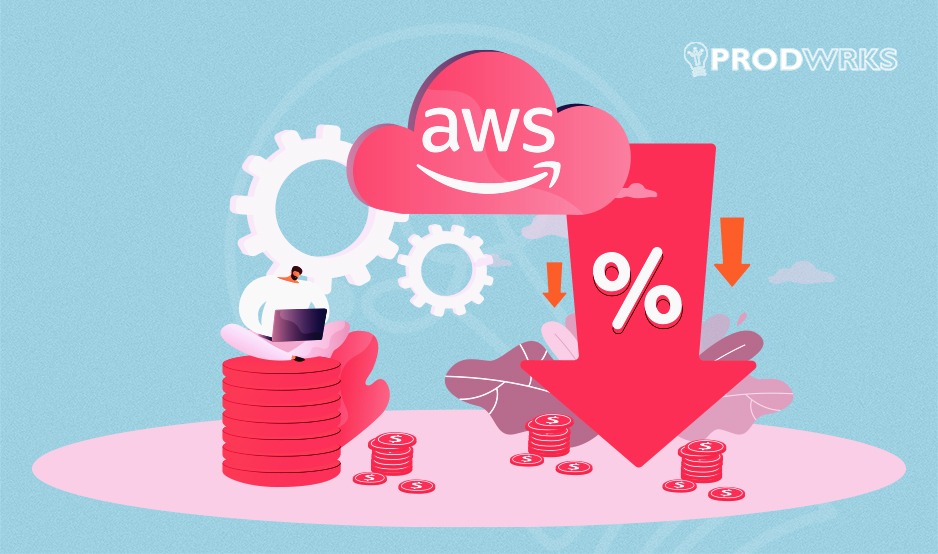
The author of this article is Sathyanaraynan B, DevOps Leader at Siam Computing.
In this blog, I will share some insights and strategies for cutting down on AWS cloud service costs. By adopting informed usage and leveraging the available expertise, businesses can identify opportunities to optimize their AWS spending without compromising performance or reliability. Besides, mindful spending through knowledge of AWS Cloud cost-cutting strategies can help enterprises to embrace the full potential of cloud computing and revolutionize how they operate with greater efficiency and endless possibilities for a sustainable future.
1. Choosing the Right Instance Type
One of the easiest ways to reduce AWS costs is by choosing the right instance type for your workload. AWS offers a wide range of instance types, each with different combinations of CPU, memory, and storage. By selecting an instance type that closely matches your workload’s requirements, you can avoid paying for excess resources you don’t need.
For example, if your workload requires high CPU usage but doesn’t need much memory or storage, you could choose a compute-optimized instance type. On the other hand, if your workload requires a lot of storage but not much CPU or memory, you can select a storage-optimized instance type.
2. Using Auto Scaling
Another way to reduce AWS costs is by using auto scaling to automatically adjust your instance count based on demand. Auto scaling allows you to set minimum and maximum instance counts, as well as scaling policies that dictate how and when instances are added or removed.
By using auto scaling, you can ensure you have enough instances to handle peak demand without over-provisioning and paying for idle resources during periods of low demand.
3. Using Reserved Instances
Reserved instances allow you to purchase compute capacity at a discounted rate in exchange for a one-time upfront payment or a smaller monthly fee. They are a great option if you have predictable usage patterns, as they can save you up to 75% compared to on-demand instances.
AWS offers several types of reserved instances, including standard, convertible, and scheduled. Each type has different pricing and flexibility options, so it is important to choose one that best meets the needs of your business.
4. Using Spot Instances
Spot instances are unused AWS compute capacity available for a lower price than on-demand instances. The catch is that spot instances can be reclaimed anytime if AWS needs the capacity for on-demand instances, so they are only suitable for some workloads.
However, spot instances can be an excellent way to reduce AWS costs if your workload is flexible and can handle interruptions. AWS also offers a Spot Instance Advisor to help you identify the best instances and the maximum price you should bid.
5. Using AWS Cost Explorer
AWS Cost Explorer is a tool that allows you to visualize and analyze your AWS spending. Cost Explorer can help you identify areas where you are overspending and find opportunities to cut costs.
For example, you can use Cost Explorer to identify consistently underutilised instances that can be downsized or terminated. You can also use Cost Explorer to identify services or resources that are not being used at all and can be deleted.
6. Using AWS Savings Plans
AWS Savings Plans allow you to commit to a consistent usage period over one or three years in exchange for a discounted rate on your AWS bill. Savings Plans are similar to reserved instances but are more flexible, allowing you to apply the savings to any instance type in any region.
Savings Plans can save you up to 72% compared to on-demand pricing, making them an excellent option for workloads with steady usage patterns.
7. Using AWS Trusted Advisor
AWS Trusted Advisor is a tool that provides recommendations for optimizing your AWS infrastructure across five categories: cost optimization, performance, security, fault tolerance, and service limits. The cost optimization recommendations can help you identify areas where you’re overspending and find opportunities to cut costs.
For example, Trusted Advisor can identify unused Elastic Load Balancers (ELBs) and recommend deleting them to save on costs. It can also identify underutilized Amazon RDS instances and recommend downsizing or terminating them.
8. Using AWS Cost and Usage Reports
AWS Cost and Usage Reports provide detailed information on your usage and spending, including resource utilization, costs by service, and cost allocation tags. You can use this information to identify areas where you’re overspending and find opportunities to cut costs.
For example, you can use Cost and Usage Reports to identify services that consume a lot of resources and cost you more than you anticipated. You can also use cost allocation tags to track costs by department, project, or any other dimension that is important to your business.
9. Using AWS Marketplace
AWS Marketplace is an online store that allows you to purchase pre-configured software solutions from third-party vendors. By using AWS Marketplace, you can save time and money on software licensing, deployment, and management.
For example, if you need a database solution, you can search AWS Marketplace for pre-configured solutions that meet your requirements. By using a pre-configured solution, you can avoid the time and cost of setting up and configuring a database from scratch.
10. Using AWS Cost Anomaly Detection
AWS Cost Anomaly Detection is a feature that uses machine learning to identify unusual spending patterns in your AWS account. Anomalies can be caused by changes in usage patterns, pricing, or resource utilization.
By using Cost Anomaly Detection, you can quickly identify and investigate anomalies before they become major cost issues. For example, if Cost Anomaly Detection identifies a sudden increase in spending on Amazon S3 storage, you can investigate to see if there is an underlying issue that needs to be addressed.
In conclusion, there are many strategies for cutting AWS costs, from choosing the correct instance types to leveraging AWS Marketplace and using machine learning to identify anomalies. By using these strategies, organizations can maximize their AWS investments, redirect saved resources towards innovation or other business priorities, and achieve greater financial efficiency in the cloud.
ABOUT THE AUTHOR

Sathyanaraynan B is a DevOps Engineer at Siam Computing. Deeply passionate about technology and its impact on businesses, he is fascinated by the possibilities cloud computing offers and how it can transform the way organizations operate.
He takes a keen personal and professional interest in exploring and understanding the intricacies of AWS and its cost optimization strategies to enable businesses to embrace the full potential of cloud computing without any budget constraints.
His goal is to empower businesses with the knowledge and insights needed to navigate the AWS ecosystem and achieve cost efficiency. With the quick advancement of technology, he envisions a society where all businesses, big or small, can leverage the power of cloud computing through mindful spending and free up their resources towards a sustainable, just, and fair future for everyone.



